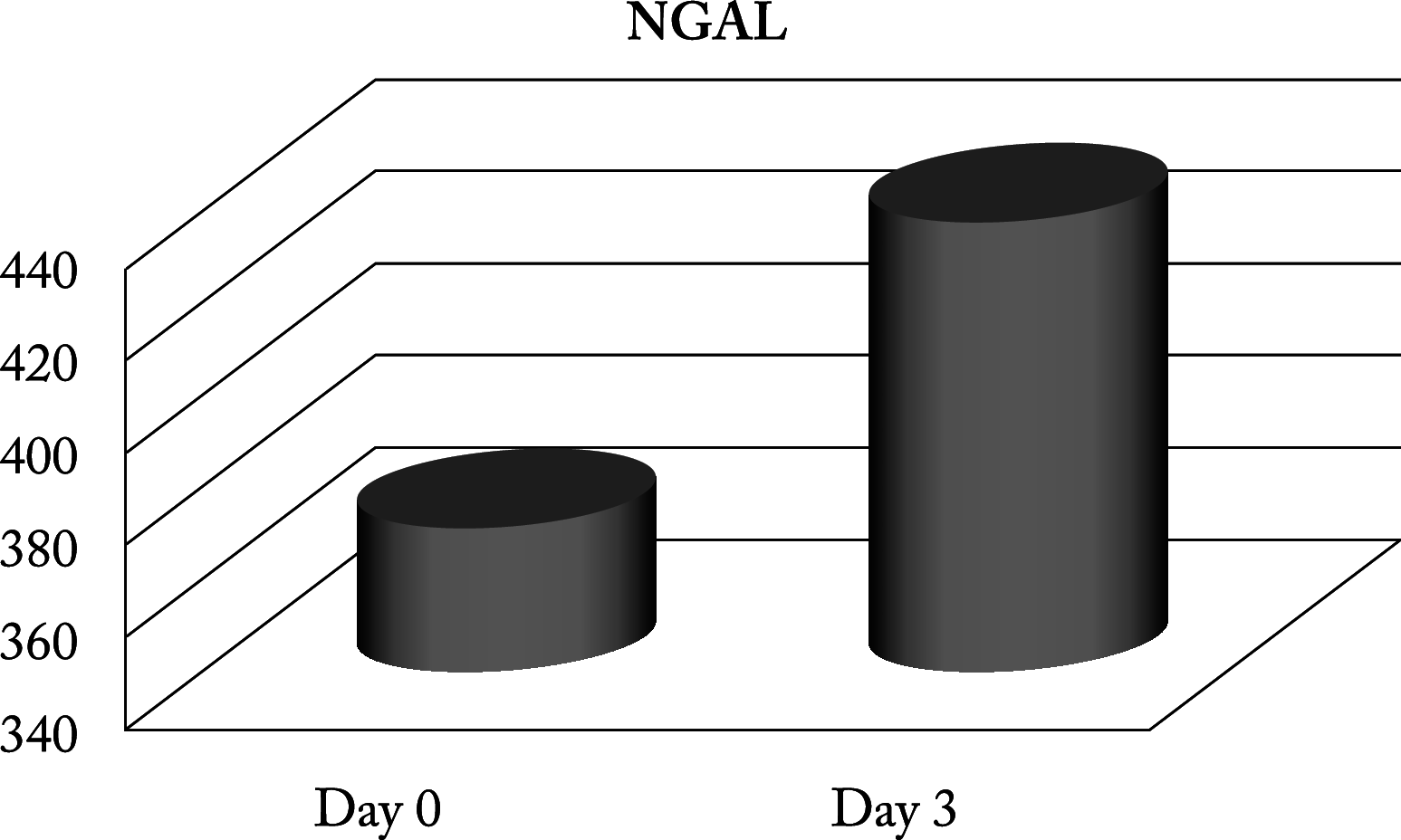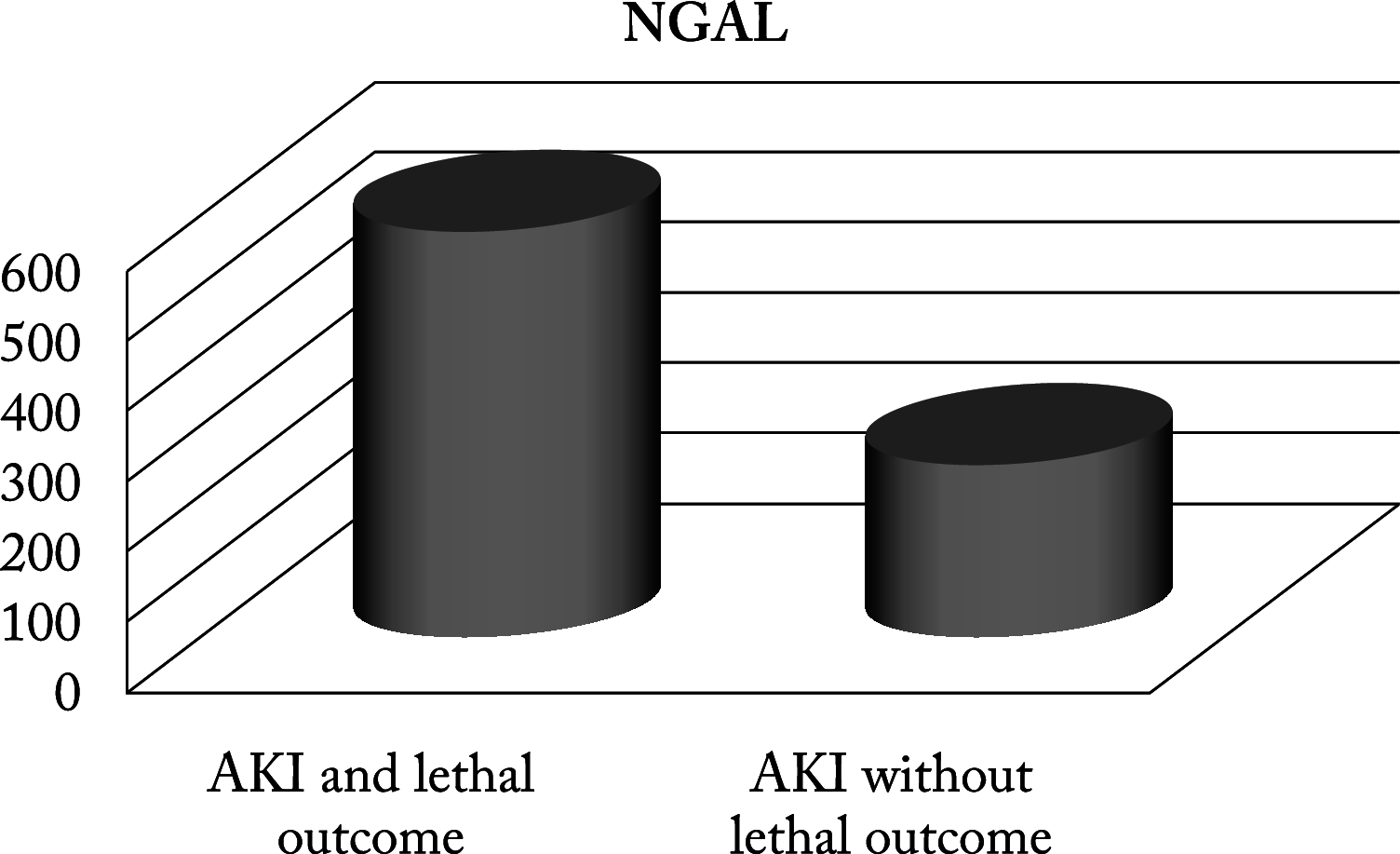NEUTROPHIL GELATINASE-ASSOCIATED LIPOCALIN AS AN EARLY BIOMARKER OF ACUTE KIDNEY INJURY IN NEWBORNS
- PMID: 32724275
- PMCID: PMC7382871
- DOI: 10.20471/acc.2020.59.01.07
NEUTROPHIL GELATINASE-ASSOCIATED LIPOCALIN AS AN EARLY BIOMARKER OF ACUTE KIDNEY INJURY IN NEWBORNS
Abstract
The aim of the study was to determine the incidence, risk factors and efficiency of the neutrophil gelatinase-associated lipocalin (NGAL) biomarker in early diagnosis of acute kidney injury (AKI) in newborns. The study was designed as a prospective, clinical, epidemiological investigation conducted in the period of three years, which included 50 newborns with AKI hospitalized in the Neonatal Intensive Care Unit, University Children's Hospital in Skopje. The estimated prevalence of AKI was 6.4%, while the prevalence according to RIFLE classification was 8.7%. Perinatal asphyxia was a common predisposing factor associated to kidney injury. The mortality rate was 32% and was significantly higher in the group of newborns with congenital heart diseases. There was a significant difference between NGAL values and creatinine values on the day of admission. There was a significant difference in NGAL values between newborns with AKI and lethal outcome and newborns without lethal outcome (p<0.001). In conclusion, AKI is a life-threatening condition. It is an independent contributor to mortality. Urinary NGAL is an early predictive biomarker of AKI in critically ill newborns.
Keywords: Acute kidney injury; Biomarkers; Early diagnosis; Infant, newborn; Lipocalin-2; Risk factors.
Figures






References
MeSH terms
Substances
LinkOut - more resources
Full Text Sources
Miscellaneous
